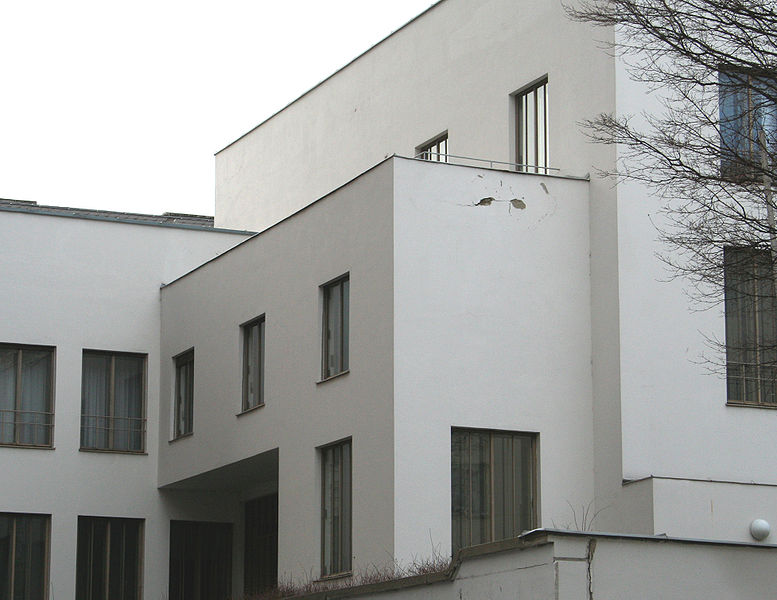Farber Schwartzen
By:
August 6, 2009
 LONG BEFORE PRISON, Martha Stewart proposed and then dropped a plan to endow the Martha Stewart Professorship in Home Economics at the Harvard Business School. Evidently, Ms. Stewart wanted not only to fund the chair, but to be named its first incumbent as well. Not long after the deal fell apart, America’s unofficial Dean of Dining and Decorating put in a speaking appearance at Radcliffe, proving that her goodwill towards the richest university in the world was undiminished.
LONG BEFORE PRISON, Martha Stewart proposed and then dropped a plan to endow the Martha Stewart Professorship in Home Economics at the Harvard Business School. Evidently, Ms. Stewart wanted not only to fund the chair, but to be named its first incumbent as well. Not long after the deal fell apart, America’s unofficial Dean of Dining and Decorating put in a speaking appearance at Radcliffe, proving that her goodwill towards the richest university in the world was undiminished.
Such sportsmanship offer hope that one of Harvard’s libraries might someday play host to the Martha Stewart Archives. Imagine the riches — including the following document, taken from the transcripts of the MarthaStewartLiving.com chatroom. It would seem — if this transcript is to be believed — that Martha Stewart’s concept of color attracted the interest of dead white men Ludwig Wittgenstein and Johann Wolfgang von Goethe, who managed to find their way to her site through the ether which connects the World Wide Web to the World Beyond. (Hermenaut has been in the vanguard here, bringing to light such occult phenomena of the information age; see issue 16’s “Dear Teddie” for a similar discovery). In what follows, “MSL” is the voice of the chatroom host; we’re not sure it isn’t the would-be Professor of Home Economics, Martha Stewart herself. — eds.
MSL: Hello all! We’re opening our chatroom today to talk about colors and how to use them in decorating our homes. Let’s take our first question:
heinz57: We’re currently building our first home. Should we choose colors now, or wait until the house is built?
MSL: Hi, heinz! It really depends on you. If you know you have real strong color preferences, then you should start thinking about matching them to the rooms. Otherwise, it’s probably a good idea to get inside the house and see what it feels like in there.

WITT: Well, this is very interesting to me! When I designed my sister’s house in Vienna, we never even discussed color, and of course you know how it turns out: white, white, white — every room is white!

MSL: Yes, well people say that rooms always look bigger when they’re painted white, but there are plenty of other colors that will work, even in small rooms.
WITT: Though it’s interesting that we call white a “color,” isn’t it? I want to say that it isn’t a color at all, that my sister’s house has no color at all.
MSL: Thanks, Witt! And now we’re on to the next question.
bld1: We have an olive couch, and our living room has hardwood floors. What’s a good color for us?

MSL: You know, olive is a great color, because it can be warm or cold depending on what you pair it with.
WITT: I want to ask a question about olive as well. Could you not also call it reddish-green?
MSL: I’m not sure what you mean.
WITT: I mean the color “olive”; would you call it reddish-green?
MSL: I don’t know about that, Witt. Didn’t your art teacher tell you that mixing red and green makes brown? But we ought to move on, now, and talk the mid-range neutrals. Now, these colors are not dark, but they’re not light either. They give a room good presence without a lot of color. And, like a pair of khakis,they’ll match anything!
RAH15949: What are the names of those colors? Can I find them at Martha’s Paints?
MSL: Oh yes, and there are lots of special colors, you can find them all at Kmart. Let’s see, there’s Scone, one called Fresh Hay, a very sort of warm blue one called Cornflower, and another good neutral called Old Linen.
WITT: I should like to ask, what is the color “scone”?
MSL: Well, it’s sort of a warm, dry, creamy, gold — you know, like a baked English scone.
WITT: Yes, I am familiar with these scones and have enjoyed them on occassion. But I what I want to know is, is “scone” a single color, or several colors?
MSL: It’s a single color in that when you buy it it comes in one can, so you don’t need to worry about mixing it or anything.
WITT: But you say that colors such as this may have highlights in them? And those highlights would be colors themselves, correct?
MSL: Sure. Sure they would be colors. But maybe we should take another question right now.
burnco: Hi! We’re about to have a baby and we don’t want to pick the same old colors — we want colors that aren’t overly stimulating but are fun and certainly gender-neutral.
MSL: I guess the baby can’t offer much input yet! Anyway, I’m glad you want to avoid the obvious old pink-and-blue. So: think about a light, pale green, which works well with either a boy’s or girl’s room. If you do want to go a more traditional route and still have fun, try a blue with a lot of green in it, almost a pale aqua for the boy; and for the girl, try something like a melted creamsicle.
WITT: Why are pink and blue obvious?
MSL: Oh, you know. Pink’s girls, and blue is for boys.
WITT: And this we learn not from the colors themselves, but from the way people use them?
MSL: Yes. And no. I mean, pink is cute, really, like little baby girls, while blue
heinz57: I see what you’re saying, Witt. It drives me nuts that everyone thinks pink is for girls and blue is for boys. What’s up with that?
MSL: Well it drives me nuts too heinz — it’s just plain bad taste. It’s *common*! But I can see where the idea comes from.
WITT: So blue, for example, what does it mean to you? What does blue do in the world?
MSL: I don’t know — blue is cool and sort of — distant.
WITT: So colors are like the “moods” of people. But tell me another thing: Are blue and, say, Cornflower, are they “colors” in the same way?
MSL: I’m sorry, I
WITT: I mean are they both the same kind of thing. Or are they different.
MSL: Well, blue is just generic blue. But Cornflower is specific.
WITT: Do you want to say it evokes some specific thing in the world? Namely the cornflower.
MSL: Yes! Yes that’s exactly what I’m saying.
WITT: And when you see a certain blue, and you tell me, “this color is called Cornflower,” do you expect that I should see in my mind a picture of a cornflower?
MSL: Yes, I like that, only I’ve never seen a cornflower before.
WITT: Neither have I! Or I should say that I have probably seen them without knowing I have seen them[, w]hich is essentially the same thing. But my question for you now is, how is that different from the little boy’s blue?
MSL: I’m sorry?
WITT: You say this color, Cornflower, evokes a certain response that the generic blue does not. And yet you say that blue is cool and distant.
MSL: But not just any blue —I don’t think —
WITT: I want to say that we’re working with a kind of color animism here, in which we talk about colors using the language of certain spiritual or metaphysical properties.
bld1: I remember Cornflower, it comes in the Crayola box. I never knew what it meant either! I always thought corn was just green and yellow.
WITT: Yes! And so when you are thinking of that crayon, and you tell someone it’s Cornflower, and they have seen cornflowers, but never the crayon, then are you both talking about the same color?
heinz57: I know what you mean! It’s like talking about traffic lights with a colorblind person. He knows what you mean even though he doesn’t know green.
WITT: Yes, Herr Heinz, though I want to say this is the opposite case — but the problem arises in the same fashion. Yet with these scones and cornflowers, we have something else, too, which we also have when we talk about a boy’s colors and girl’s colors. For here we are talking about colors in the same way we talk of spiritual things.
burnco: Wait! WITT, what color do *you* recommend for a baby’s room?
MSL: People, I really don’t think Mr. WITT here is qualified to answer these kinds of questions… Let ME do the recommending in this chatroom. Now, does anyone have a specific question?
GOETHE: Colors are infused with just these mystical Properties! Don’t you see that they are themselves the very stuff of Spirit, extending into the World? We become acquainted with their Ways in their infinite Variations, in their Struggles, which are the Struggles of Shadow and Light themselves!
MSL: That’s not even a question!
WITT: Herr Goethe, please: I have thought of color as a kind of arithmetic. I mean that color terms have been used to talk in a kind of shorthand about the world, without having to deal with the set of all things that are the case. But with these colors, Cornflower and Scone, which are also names of things, there is no arithmetic, no system. Here we have as many colors as there are objects in the world.

GOETHE: But these are the Practitioner’s own terms, mein gute Freund. It makes an enormous Difference which Route to Understanding you choose in these Things. To those who use Color, these Words have Meanings and Significances, which are inadmissable to the Mathematician or Physicist. We are not discussing the Physics of Light, you see, but the Phenomena of Color.
WITT: The problem is not the question of physical laws but of how we talk about these things in the first place. Cornflower: presumably it changes with the seasons and from flower to flower. Is a cornflower blue on a moonless night? NO— although hair may be blonde in a black-and-white photo, or a white piece of paper appear grey when placed on newly fallen snow. The language game of color as we usually play it allows for such —I want to say “multiplications”; they increase the “amplitude” of that which may be spoken. But this cornflower — color animism — by multipyling the names we speak for color, the amplitude of the words which can be spoken about color diminishes. More words, only they’re passing through a narrow opening, without relating to one another.
MSL: I am sorry, but I must break in again here. Do either of you have a room to paint? A rug to choose? We can even talk about cool and warm color choices for one’s wardrobe — but if you don’t have a question like this, I really have to move on to someone else. Now.
aunty9: My husband wants a dark color like Chocolate for our living room and I like it too, only it’s too dark. But I don’t like light creamy tans either. Is their a treatment for these dark colors?
MSL: Well yes, using a sponge and a white paint you could whiten it.
WITT: How can whiteness be added to a color? When we see white as an absolute, which would seem to disappear whenever color arises.
MSL: But yes you can make whiteness appear in color! It’s called HEATHER!
GOETHE: Say, this Creamsicle Color, which MSL states is best for die Kinder, sounds absolutely delightful — like the Color of the Sun as it pierces the Thunderstorm’s gloomy Veil, where it makes a Halo of the most joyous and sprightly Colors. Even primitive Folk will take this as the Sign of God’s Holy Covenant with Man!
WITT: But the creamsicle itself is a cold confection, Herr Goethe, despite the warmth of its color, which makes all of this very interesting indeed.
aunty9: That’s so true! I mean, it’s funny that they chose a *warm* color for a popsicle.
burnco: And I like what you say about white, WITT, it really is different from the other colors.
WITT: Yes it is. After all, you can imagine colors as transparent as in stained glass windows but you really can’t imagine a clear white.
heinz57: That’s totally right!
MSL: But a clear white is milky! Creamsicle is coolish-warm! And if you don’t know what a cornflower is, I mean really, I don’t what to say! And I’m sorry, but now we really are out of time.
A version of this transcribed and edited chat first appeared in April 2001 on Hermenaut.com.
